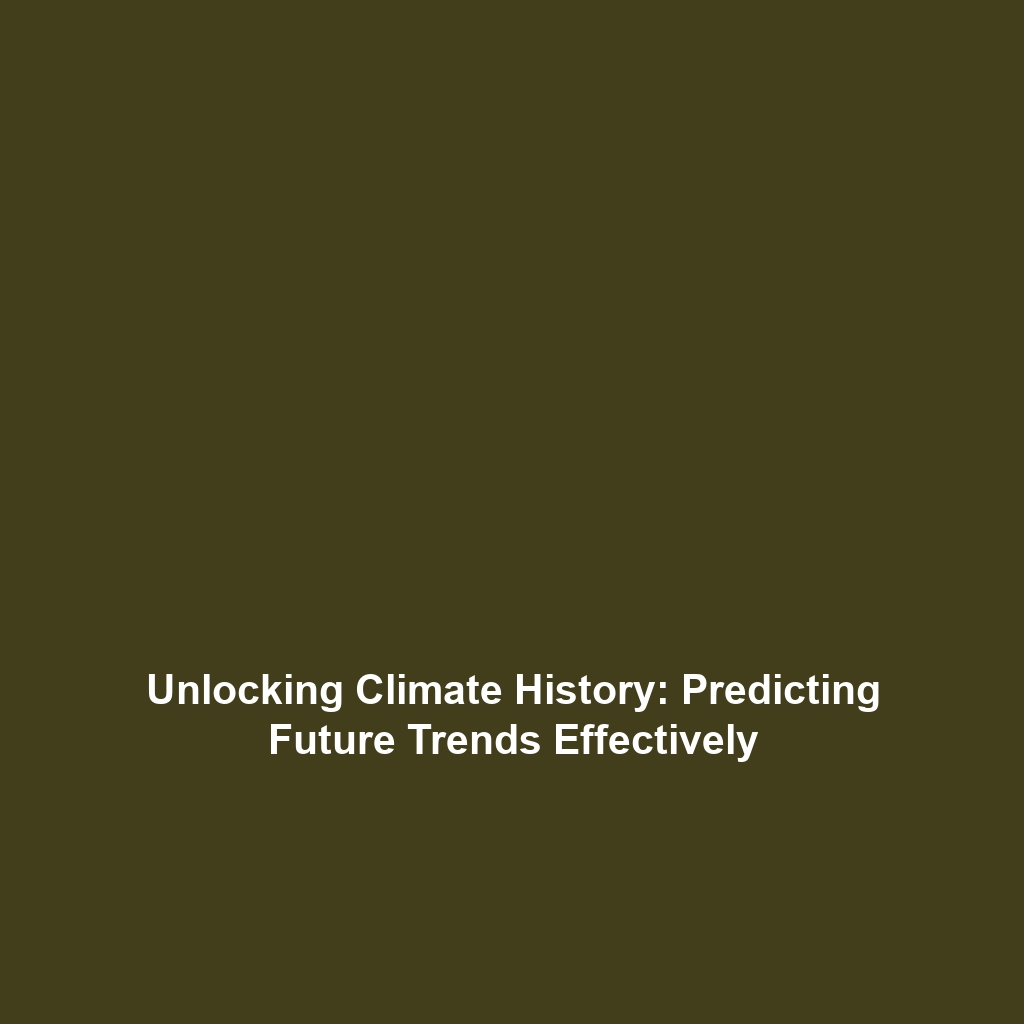Impacts on Ocean Acidification, Extinction Events, and Ecosystem Shifts During the PETM
The Paleocene-Eocene Thermal Maximum (PETM) stands as one of the most significant climate events in Earth’s history, characterized by rapid global warming and profound ecological changes. This period, which occurred approximately 56 million years ago, offers invaluable insights into the dual phenomena of ocean acidification and mass extinction. Understanding the impacts of ocean acidification alongside extinction events during the PETM is crucial for grasping the broader dynamics of climate history and the resilience of marine ecosystems in the face of climatic extremes.
Key Concepts
Ocean Acidification During the PETM
As carbon dioxide levels surged, the oceans absorbed more of this greenhouse gas, leading to a drop in pH and subsequent ocean acidification. This shift adversely affected marine organisms, particularly those with calcium carbonate shells, like mollusks and corals.
Extinction Events in the PETM
Accompanying the warming trend were significant extinction events, predominantly impacting marine species. The fossil record indicates a correlation between rising temperatures and biodiversity loss, revealing a complex interplay between temperature rise and species survival.
Ecosystem Shifts and Their Impacts
The shifts in ecosystems during the PETM led to new community structures, as some species thrived while others perished. These changes are an essential aspect of climate history, demonstrating how rapid environmental shifts can reshape biodiversity.
Applications and Real-World Uses
Understanding the impacts of ocean acidification, extinction events, and ecosystem shifts during the PETM provides critical applications in various fields:
- Informing conservation strategies to protect vulnerable species in the face of modern climate change.
- Enhancing predictive models of future ecological responses to climate variability.
- Guiding policy-making around carbon emissions and marine protection.
Current Challenges
Despite the significance of PETM studies, researchers face several challenges:
- Data Limitations: Fossil records are incomplete and can complicate the understanding of past biodiversity.
- Complexity of Ecosystem Interactions: The relationships between species during rapid climatic shifts are not well understood.
- Translating Past Events to Present Contexts: Divergence over millions of years makes it difficult to draw direct parallels to current climate challenges.
Future Research and Innovations
Ongoing research aims to address key questions surrounding the PETM’s implications for modern climate dynamics. Innovations include:
- Advanced modeling techniques to simulate past climate scenarios and their ecological ramifications.
- Genomic analyses to explore the adaptability of species to historical climate changes.
- Integrative studies combining geochemical data with biodiversity assessments.
Conclusion
In summary, the impacts on ocean acidification, extinction events, and ecosystem shifts during the PETM serve as an essential lens for understanding Earth’s climatic past and informing its future. As we confront ongoing climate challenges, ongoing research into this pivotal period remains relevant for fostering resilience in marine ecosystems. For further reading on climate history and its implications, explore our other articles on marine biodiversity and climate science.
